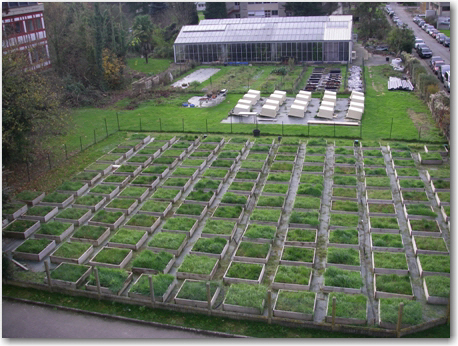Computer Scientists Collaborate with Biologists on Faster Method to Study Plant Ecology

Marc Garbey, a professor of computer science and mathematics at UH, and his fellow researchers describe these findings in a paper titled โLarge scale parameter study of an individual-based model of clonal plant with volunteer computing,โ appearing in a recent issue of Ecological Modelling. The journal covers the use of mathematical models and systems analysis in ecological processes and sustainable resource management.
โMost plant communities outside of forests are dominated by clonal plants, which are basically genetic clones of one another,โ Garbey said. โThese plants are able to colonize space by vegetative reproduction, and the clonal plant communities such as grasslands are of tremendous importance to humanity.โ
Underscoring their importance, Garbey says that prairies are used for raising cattle and may support biodiversity, as well as play an important role in regulating carbon emissions. These ecological functions will be increasingly important in the future framework of global change. Ecologists wish to better understand how clonal plant arrangements may have an effect on these functions. Thatโs where Garbeyโs talents as a computational scientist come in.
His teamโs research looks at the interactions between plants and their dynamics, using a โvirtual prairieโ that involves trying to understand clonal strategies in complex ecological systems. His main collaborator is his daughter, Cendrine Mony, an assistant professor in ecology at the University of Rennes in France, and they published their first paper together on this topic five years ago. While Mony and her collaborators provide expertise in the ecology of plants, Garbeyโs group provides capabilities in computational science.
โWe grow plants virtually, mimicking nature to try to get the fundamental mechanism of how a community changes in time and space, by comparing our computer simulation with a special series of live experiments done in France,โ Garbey said. โOnce the model works, we manipulate the plant growth in our computers simulating a series of โbadโ scenarios, such as lack of water and nutrients, intensive grazing or mowing and adding virtual pollution. Our computer simulations dramatically increase our capability to test various scenarios or ideas.โ
Using this method, the researchers would ultimately be able to design the ideal prairies by combining the right species that would offer a variety of ecological benefits. Among these benefits are creating prairies able to clean up nitrate pollution so that it does not go back into the water system, providing stability where vulnerable species can coexist and preventing erosion by repairing the ground.
In addition to the various field experiments, a crucial element in this research is the thousands of volunteers around the world who donate time and space on their computers. To carry out these time- and space-intensive computer simulations efficiently, Garbey and his collaborators relied on their virtual prairie programโs more than 10,000 volunteers in 90 countries. This is an arrangement where people volunteer to provide computing resources on their personal PCs for information processing, problem solving and storage of the researchersโ work. The virtual prairie project extensively uses the open-source software computing platform of David Anderson, a professor in the University of California, Berkeleyโs space sciences laboratory and adjunct professor in the computer science department at UH.
Beyond the help that it provides Garbeyโs project, benefits of volunteer computing include encouraging public interest in science and providing the public with a voice in determining the directions of scientific research. While volunteers are typically members of the general public who own Internet-connected PCs, organizations such as schools and businesses also may volunteer the use of their computers. UH also provides unused computing cycles for the research through the High Performance Computing (HPC) group in the universityโs information technology department. The HPC manages the Research Computing Center, which is a data hub dedicated to supporting the research needs of the campus.
โEcology of plants is important for us, as well as the next generation, and large-scale computer simulation with virtual prairies is going to change the way we do research and drive experiments,โ Garbey said. โIt is a wonderful concept to engage volunteers all around the world in this new kind of science and also may be used to improve other types of ecosystems in the future.โ
The project has consistently been funded by top research agencies in France, including the National Agency for Research, the National Center for Scientific Research, the Institute for Research in Science and Technology for the Environment, and the National Institute for Research in Computer Science and Control.
At UH, Garbey worked with Ph.D. candidates Malek Smaoui and Waree Rinsurongkawong. At the University of Rennes, Monyโs team consisted of professor Bernard Clement and Ph.D. candidates Marie-Lise Benot and Anne-Kristel Bittebiere. Benot is now a post-doctoral researcher at the Laboratory of Alpine Ecology in Grenoble, France.
For more information or to participate in the virtual prairie project, visit .
- Lisa Merkl, University Communication